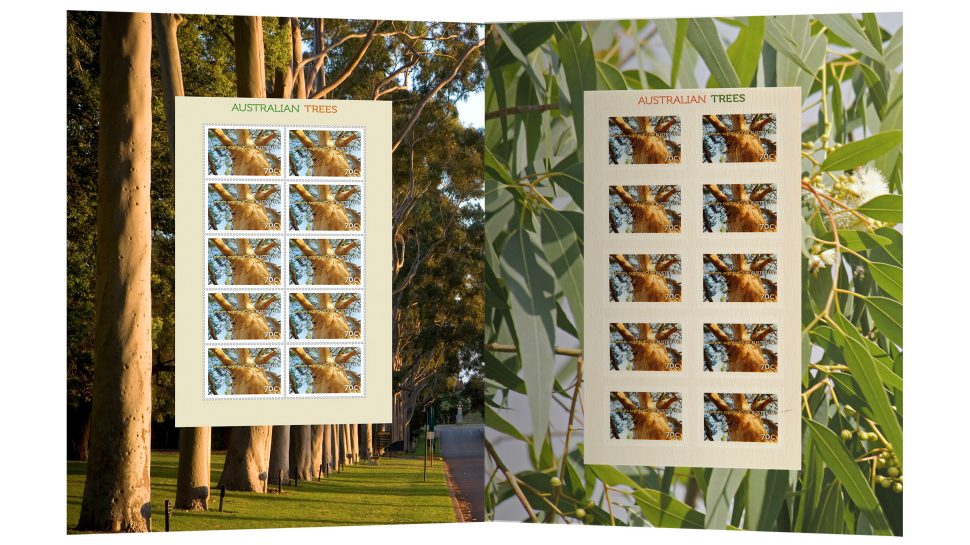What is the basic process for printing an Australia Post stamp, from receipt of final art to finishing?
From receipt of the artwork, the projects team hold an initial meeting with the printer to determine print specifications. They then provide a proof to the design team to evaluate for accuracy of content and colour. We colour correct artwork as required.
When proofs are approved, the printer is supplied with print specifications and the projects team sign off the print for colour and content prior to print commencing.
Printed sheets are delivered to Australia Post Sprintpak to convert to finished product. The process involves counting and padding the sheets for perforating. After perforating, the sheets are cut to module size for inspecting, then the modules are counted and packed ready for distribution.
The finished product is provided to the fulfilment team, where they pick, pack and distribute orders to Australian Post Offices.
Obviously, planning begins well before this. What preparation and liaison work needs to be done with other philatelic teams and how far ahead does this commence?
Our first involvement begins at initial design stage. I am a member of the Stamp Advisory Committee (SAC) and my role is to evaluate designs from a technical perspective. This can happen six months prior to artwork being ready to handover to Australia Post Sprintpak.
What kind of security and other special features must be built into the printing process?
There are numerous security features that are available, but we mainly utilise security features in our paper to validate our stamps in the marketplace. We have also used microprint, and our pre-press work prior to printing is designed to make any attempted reproduction of our designs very difficult to replicate.
Are there any special features of the paper used?
Our gummed stamp paper is made in a security paper mill and contains agents that enable our stamps to be recognised as a legitimate stamp in our mail network. Because it is a security grade paper, it can only be supplied to authorised users, so we can easily identify any counterfeit stamps people may try and put into the marketplace.
Tell me about the quality control, testing and evaluation aspects of the stamp printing process?
We have stringent quality control process that begin with pre-testing of our stamp papers prior to taking delivery, through to conformance testing of stamps in our mail network prior to stamps being issued to market. Our tests are designed to ensure that we have consistent quality in our final product and that it also confirms to the technical requirements of our postal network.
Australia Post Sprintpak has been involved in many innovations and world-firsts over the years. Can you tell us about those?
There have indeed been many innovations over the years, including the following:
- We developed patented self-adhesive stamp technology to provide self-adhesive rolls of stamps in 1989 and booklets in 1991.
- We pioneered the introduction of self-adhesive stamp products into nine overseas postal administrations.
- Personalised Stamps™ were launched as a world-first at the Australia 1999 Stamp Exhibition and continue to this day.
- Digitally printed Gold Medallist instant stamps launched as a world-first at the Sydney Olympics in 2000
- We developed personalised gummed stamps, self-adhesive booklet and postcard stamp products that were produced on-site at the Australia 2013 Stamp Exhibition.
- We produced the world’s first fully functional wooden stamp as part of the Australian Trees issue, which was issued in March 2015.


